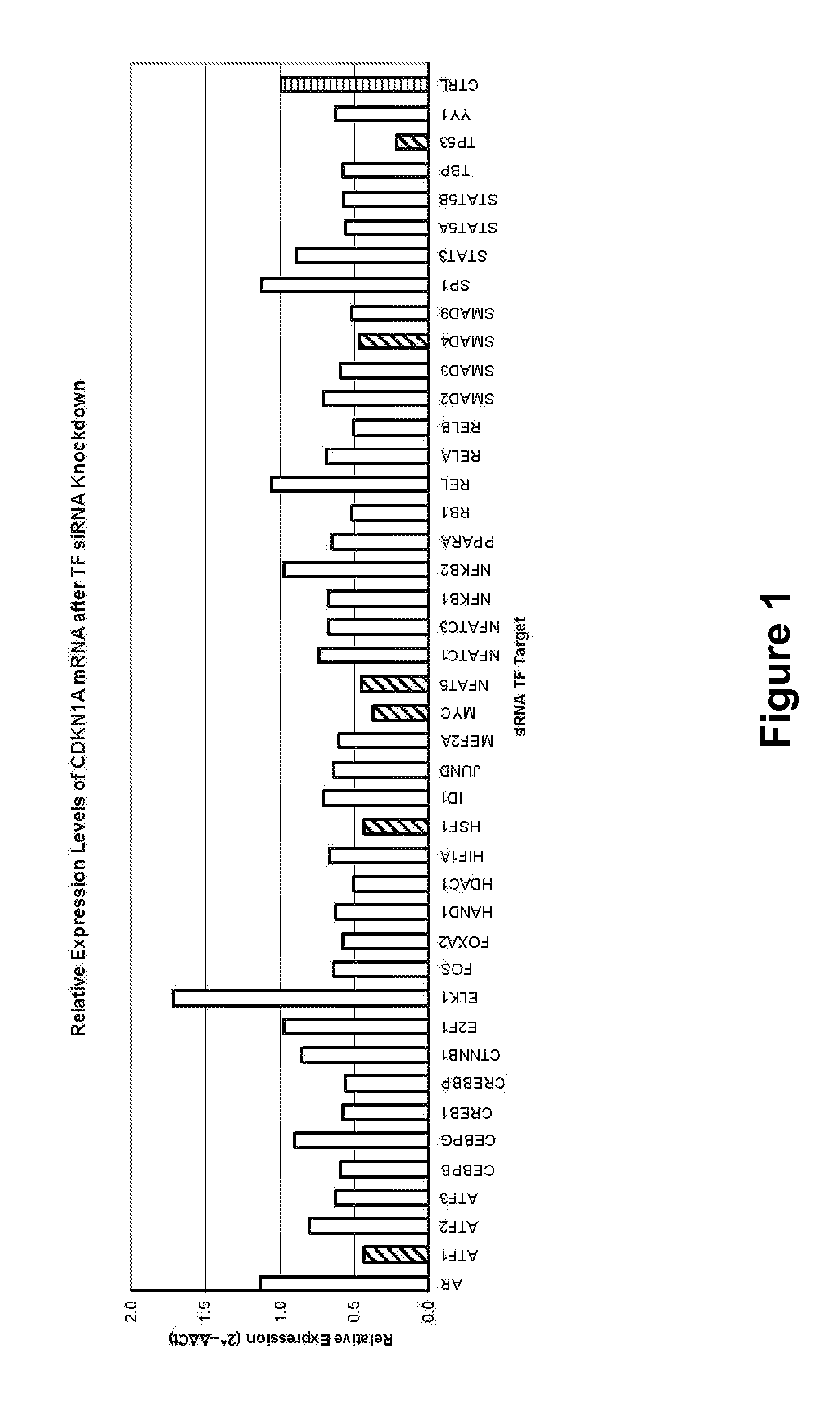Arrays and Methods for Reverse Genetic Functional Analysis
a reverse genetic and functional analysis technology, applied in the field of molecular biology, can solve the problems of limited sample library size, limited scope of library screening, labor-intensive and relatively expensive nature of these steps, etc., and achieve the effect of eliminating one source of variability
- Summary
- Abstract
- Description
- Claims
- Application Information
AI Technical Summary
Benefits of technology
Problems solved by technology
Method used
Image
Examples
example 1
[0055]A panel of siRNAs targeting 42 human transcription factors (Table 1) was selected along with four cell culture controls, specifically a negative control siRNA, a mock transfection, a transfection efficiency monitor and an assay background control, (SAH-075A; SureSilencing siRNA Array for human transcription factor signaling pathways, SABiosciences, Frederick, Md.) and transfected into parallel aliquots (1.2×104 cells) of MCF-7 human breast cancer cells (American Type Culture Collection, Manassas, Va.) by the reverse transfection method provided by the supplier using INSTANTFECT™ transfection reagent (PGR-Solutions, Bridgeville, Pa.). The cultured cells were grown in Dulbecco's Modified Eagle's Medium with 10% fetal bovine serum for 66 hours at 37° C. and 5% CO2 before treating for 6 hours with 300 μM 5-fluorouracil and harvesting for total RNA isolation using the SV 96 Total RNA Isolation System (Promega, Madison, Wis.). RNA sample quality was evaluated by examining electropho...
PUM
| Property | Measurement | Unit |
|---|---|---|
| size | aaaaa | aaaaa |
| time | aaaaa | aaaaa |
| stability | aaaaa | aaaaa |
Abstract
Description
Claims
Application Information
 Login to View More
Login to View More - R&D
- Intellectual Property
- Life Sciences
- Materials
- Tech Scout
- Unparalleled Data Quality
- Higher Quality Content
- 60% Fewer Hallucinations
Browse by: Latest US Patents, China's latest patents, Technical Efficacy Thesaurus, Application Domain, Technology Topic, Popular Technical Reports.
© 2025 PatSnap. All rights reserved.Legal|Privacy policy|Modern Slavery Act Transparency Statement|Sitemap|About US| Contact US: help@patsnap.com

